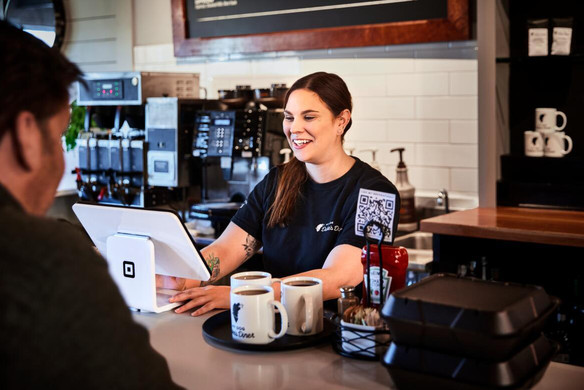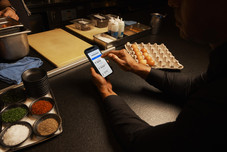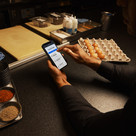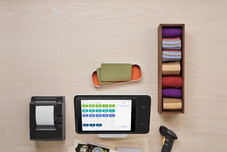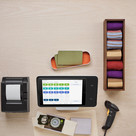Table of contents
It might feel like something from an episode of the Jetsons, but robot chefs are stepping into the kitchen, as seen at this year’s National Restaurant Association Show. In fact, the 2022 showing featured a number of restaurant robotics manufacturers with products that are already in use in fast-casual eateries, nationwide chains, and small local restaurants.
In the face of staffing shortages, increased labor costs, rising cost of goods, and high overhead costs, restaurants are turning to automated tools, including robotics, to increase efficiency and fill in gaps left by the human workforce shortage. As many as 50% of U.S. restaurant operators plan to deploy automation technology in the next 2–3 years to help fill labor gaps.
What will it look like for restaurant owners to collaborate with robots?
Meet the robot roster
The term ‘robot chef’ may bring to mind a humanoid with a boxy head and Inspector Gadget arms cooking over a stovetop, but restaurant robotics can take many different forms. Robots are more likely to act as support for human staff — helping with tasks like chopping ingredients or cleaning — in a similar way that automation tools are already being used to improve the guest experience when making a reservation, ordering at the table, and paying for meals.
Three of the most common areas where robotics are already taking off in the restaurant space are in serving, making drinks, and helping to cook food.
Robot servers and food runners
Robotics are showing a lot of promise as food runners and support for waitstaff. With the ability to program a robot to the floor plan of a restaurant, businesses can use automated tech to efficiently deliver food from the kitchen to a guest’s table.
A robot called Matradree, made by Richtech Robotics, works as a food runner to fill in some of the gaps left by staffing shortages. While a human staff member is taking orders, the Matradee robot is able to run food to another table. The robot can detect its surroundings to maneuver carefully around the restaurant floor.
Another food-running robot developed by Bear Robotics has shown success as a supportive team member, easing some of the strain for a lean service team. When food orders come up from the kitchen, staff simply place plates on top of the robot’s flat surface and punch in the table number, and she will glide over to the table on her own.
Robot baristas and bartenders
Robotics are a good fit for mixing beverages, whether at the bar or the coffee shop, as these tasks are repeatable and include consistent, measured ingredients.
Richtech Robotics developed ADAM, a robotic system with multi-jointed arms, to make coffee drinks and cocktails. The robot can reach for, pour, and stir ingredients with precise, calculated movements. ADAM could potentially fulfill a drink order from start to finish, with a human needed only to program the order in at the beginning.
The CookRight coffee system from Miso Robotics automates the process of monitoring and checking their coffee station to make it more efficient for employees to brew a new pot at just the right time.
Robot chefs, cooks, and kitchen helpers
Perhaps most exciting for restaurants is the hope of what robots can do in the kitchen to support chefs, line cooks, and their teams in making food with efficiency and quality. While robots may not be able to cook up a five-course meal yet, they thrive when it comes to straightforward, repeatable processes such as making sushi.
AUTEC has developed a line of sushi-making robots, using an assembly-line-inspired teamwork approach to crafting sushi. With separate machines specializing in making rolls, measuring rice balls, making sushi, and squirting wasabi paste, this technology team can produce perfectly formed sushi orders quickly and consistently.
Robots can also come in handy for cooking tasks that require precise timing, particularly in busy, fast-paced restaurant settings where staff have to juggle a lot of tasks (including customer service) at the same time — such as in a fast-food setting. Miso Robotics’ french-fry making robot can immerse fries in hot oil for exactly the right amount of time and then remove the basket to dump perfectly cooked french fries onto a tray, ready to enjoy.
How restaurant robotics can bolster your business
It’s no secret that working in the service industry is particularly challenging right now. Existing staff are working harder with less help, and automation is showing up in new ways to make their jobs easier. Here are just three areas where robot technology can have a big impact.
Safer work environments
Robots can take on some of the less enjoyable or more burdensome aspects of working in service industry jobs. This not only removes some of the strain for human staff, but may also make it easier to retain employees by improving the work experience.
For example, Flippy takes some of the risk and discomfort out of working as a fry cook. As Mike Bell, CEO of Miso Robotics describes, “The fry station is one of those jobs, it’s tough to do. It’s monotonous, sometimes it’s dangerous, and it’s pretty repetitive.” A machine can work with hot oil at close proximity without risk of injury. Plus, robots don’t mind doing a repetitive task all day long, freeing up human staff for the more complex, creative, and enjoyable aspects of service jobs like crafting custom meal orders and interfacing with guests.
Higher-touch customer service
Giving your staff more time to interface with guests doesn’t just boost the dining experience, it can also boost your employees’ take-home pay through tips. After implementing a food runner robot, one restaurant saw a 40% increase in the time servers spend with guests. In another restaurant that brought in a robot team member, workers reported getting higher tips because they were able to spend more time at tables delivering a personal experience to each guest.
A shield against burnout
The most immediate impact automation and robotics can have is to help prevent burnout in existing restaurant staff who are struggling to deliver pre-pandemic levels of service with fewer teammates. One restaurant owner explained that bringing in robots to augment his “overwhelmed, overworked, and frustrated” staff during extreme workforce shortages was a “no-brainer.” Robots in restaurants aren’t meant to replace human workers, but to support service industry workers by taking on some of the repetitive, monotonous, or risk-heavy tasks so they can focus on the parts of the job that require a human touch. Who knows; with robots to do some of the “dirty work,” could we see a resurgence of interest in service industry jobs?
Considerations for stepping into the robot era
Robot chefs are no longer “coming soon,” they’re already in the kitchen. Automation is changing the game in the restaurant industry, and it won’t be long before robot servers, fry cooks, and other restaurant robotics are commonplace. For restaurant owners, this means that it’s time to at least start envisioning how your restaurant can take advantage of automation and artificial intelligence, even if you’re not ready to dive into full “Jetsons mode” just yet.
Keep in mind that most restaurant robotic systems still require human staff to use and manage the robot. When looking to implement a robot system, remember to plan a strategy for training your staff on how to program and troubleshoot the device. There may be a learning curve for staff who need to work with the robot during their shifts.
When budgeting for a robot addition, it’s important to consider the cost of ongoing maintenance in addition to the upfront investment. Keep in mind that you don’t have to go big to get started in automation or robotics. For example, the Miso robotics company makes a few different models at varying price points, such as Flippy Lite, making it more accessible for restaurants to begin with a simple model and later invest in more advanced robotics.
Think about a starting point where you can use automation tools to improve your workflow or remove a pain point for your staff and guests. Looking for more ideas and guidance? Square has been on the leading edge, helping restaurant owners incorporate automation in big ways and small to meet you where you are now, and to help you drive your business into the future. See how Square can help your business.
![]()

